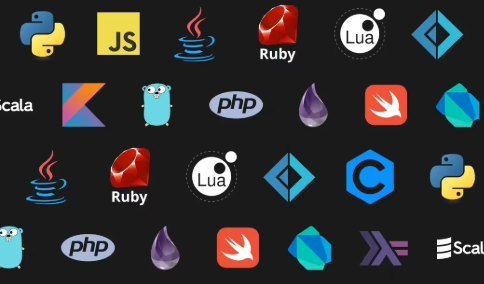Best Video Conferencing Software 2025 — Top Picks & How to Choose
Introduction
Video conferencing is no longer a “nice-to-have” — it’s central to remote work, hybrid classrooms, sales demos, client calls, webinars and even telehealth. With dozens of platforms available, choosing the right video conferencing software can feel overwhelming: you need reliable audio/video, simple joining for guests, security and compliance, integrations with calendars and productivity tools, and pricing that fits your team. This guide cuts through the noise. I’ll compare the market leaders, explain the features that actually matter (security, scalability, user experience, AI-assisted workflows), include practical pros/cons, and give a short checklist so you can pick the best virtual meeting platform for your needs. Whether you need a lightweight video call app for everyday meetings or an enterprise-grade webinar solution, this article will help you make an evidence-based decision.
How I evaluated platforms (EEAT-first checklist)
To keep advice trustworthy and actionable (Experience — Expertise — Authoritativeness — Trustworthiness), evaluate platforms against these real-world criteria:
- Reliability & AV quality — Does it handle low bandwidth and mobile users?
- Scalability & participant limits — Can it host 100, 300, 1,000 attendees or larger webinars?
- Security & compliance — End-to-end encryption, data residency, admin controls.
- Core collaboration features — Screen sharing, whiteboards, breakout rooms, recording/transcripts.
- Integrations & workflow — Calendar, Slack, LMS, CRM, cloud storage.
- Pricing & free-tier value — Real limits on meeting length, participants, and recording.
- Usability & onboarding — How easy for external guests to join (no downloads, one-click join).
- Support & documentation — Response SLAs, enterprise support and up-to-date help docs.
I cross-checked vendor docs, recent industry roundups and product help pages to validate limits and feature claims.
Top picks (at a glance)
- Zoom — Best for scalability, meeting controls and wide third-party ecosystem.
- Microsoft Teams — Best for organizations already in Microsoft 365 (tight Office integration).
- Google Meet — Best for fast, no-fuss meetings for Google Workspace users.
- Cisco Webex — Best for enterprise security, large events and advanced moderation.
- RingCentral / Zoho Meeting / BlueJeans — Great alternatives depending on integrations, telecom needs, or price.
(Why these? They consistently appear at the top of 2025 roundups and vendor comparisons for performance and enterprise features.)
Deep dive: platform-by-platform
Zoom — The flexible standard
Who it’s for: Teams that need reliable video, rich meeting controls, webinars and lots of third-party integrations.
Strengths: Excellent video/audio performance, breakout rooms, virtual backgrounds, robust host controls, mature webinar add-ons and a strong app marketplace.
Limitations: Free plan meeting length is limited (Zoom Basic meetings are capped at 40 minutes for group meetings), and enterprise buyers should review privacy/compliance options.
Zoom works well for training, remote workshops and hybrid settings where features like recording + transcriptions + whiteboards are used. Its familiarity reduces onboarding friction for external guests.
LSI keywords used: breakout rooms, webinar platform, virtual backgrounds, screen sharing, meeting recording.
Microsoft Teams — Best for Microsoft-centered organisations
Who it’s for: Companies already committed to Microsoft 365 who want integrated chat, files and meetings in one place.
Strengths: Deep Office integration (Word/Excel/PowerPoint co-authoring inside Teams), persistent chat, channels for async work, and a strong admin console. The free tier offers group calls for up to 60 minutes and up to 100 participants, making it a solid choice for teams testing collaboration features.
Limitations: The UI can feel heavyweight for small teams that only need simple video calls; full enterprise features require Microsoft 365 licenses.
LSI keywords used: team collaboration, persistent chat, calendar integration, single sign-on.
Google Meet — Simple, reliable, and browser-first
Who it’s for: Individuals, small teams and organisations that use Gmail and Google Workspace.
Strengths: Browser-based (no install for many users), easy scheduling from Google Calendar, live captions, and a clean join flow for guest participants. Free plans support up to 100 participants and typically have group meeting length limits — a compelling, low-friction option for quick calls.
Limitations: Advanced webinar features, deep admin controls, or large-scale event tools require paid Workspace tiers.
LSI keywords used: browser meetings, captions, Google Workspace integration, low-friction joining.
Cisco Webex — Enterprise-grade security & events
Who it’s for: Large organisations, regulated industries and companies that run frequent large webinars or virtual events.
Strengths: Robust security posture, advanced moderator tools, enterprise admin features, and mature breakout session management for workshops and training. Webex supports flexible breakout session configurations suitable for large events.
Limitations: Can be more complex to set up; costs scale with advanced event features.
LSI keywords used: compliance, breakout sessions, event hosting, enterprise conferencing.
Other notable platforms (short takes)
- RingCentral Video — Great for unified comms (voice + video) and telco integration.
- BlueJeans — Known for simple webinar features and Dolby-powered audio quality.
- Zoho Meeting — Budget-friendly, easy webinar and meeting features for small businesses.
- GoToMeeting — Mobile-friendly and reliable for client-facing calls.
When choosing an alternative, prioritise integrations (CRM, LMS), toll-free dial-in options, and whether you need webinar vs meeting-specific features.
Features that actually matter (not the marketing fluff)
When evaluating virtual meeting platforms, don’t get distracted by buzzwords. Focus on these practical features:
- Join experience — One-click join, browser support, and minimal downloads improve attendance and reduce dropouts.
- Audio-first performance — Good video is important, but consistent audio is essential; platforms that adapt to low bandwidth win.
- Security & admin controls — Encryption at rest/in transit, ability to lock meetings, attendee authentication and audit logs.
- Recording & transcription — Useful for missed meetings, training and compliance (check storage and retention policies).
- Breakout rooms & collaboration — For workshops, classes and brainstorming sessions, breakout support and whiteboards are key.
- Interoperability — Calendar, Slack, LMS and CRM integrations reduce context switching.
- Cost transparency — Know participant caps, meeting-length limits on free plans, and add-on pricing for webinars or large events.
- Accessibility — Live captions, screen reader support and keyboard navigation matter for inclusive meetings.
LSI keywords used: join flow, transcription, interoperability, accessibility, bandwidth optimization.
Pricing reality check (free tiers vs paid)
Free tiers are great for trials and ad-hoc calls — but they come with real limits you must plan around:
- Zoom (Basic): group meetings have a 40-minute limit for free accounts. That 40-minute cap applies broadly and can interrupt recurring workshops if you’re not prepared.
- Microsoft Teams (Free): free group calls up to 60 minutes and up to 100 participants on the free tier.
- Google Meet (Free): typically supports 100 participants and group meetings often have a 60-minute cap on the free plan; paid Workspace tiers increase limits and add recordings.
If your organization runs long workshops, frequent webinars, or large town halls, budget for a paid plan that removes time/participant caps and adds admin features.
Security & compliance: what to check
- Encryption type — Is end-to-end encryption available or is it encryption-in-transit only?
- Admin controls — Role-based access, meeting locks, account-level controls and audit logs.
- Data residency & retention — For regulated industries, where is meeting data stored?
- Third-party audits — Look for SOC 2, ISO 27001 or other certifications if security is critical.
Enterprise buyers should request a security datasheet and, if needed, a Data Processing Agreement (DPA).
Practical selection checklist (quick)
Use this checklist during pilot testing:
- Test join flow with an external guest (no corporate account).
- Run a low-bandwidth test from mobile and home Wi-Fi.
- Try breakout rooms + whiteboard + recording in one session.
- Confirm cloud storage & transcript retention and export options.
- Validate SSO and admin provisioning (SCIM) if needed.
- Check dial-in and international PSTN costs for external attendees.
- Read the vendor’s SLA and support response times.
When to pick each platform (decision guide)
- Choose Google Meet if you want a simple, low-friction solution tightly integrated with Google Workspace.
- Choose Microsoft Teams if your organisation uses Microsoft 365 and needs persistent chat + file collaboration plus meetings.
- Choose Zoom if you want flexible meeting controls, strong webinar features, and a large app ecosystem.
- Choose Cisco Webex if you need enterprise-grade security, large events and advanced moderator features.
- Try Zoho Meeting / RingCentral / BlueJeans as lower-cost or telecom-integrated alternatives.
5 FAQs (People Also Ask style)
- What is the best free video conferencing software?
For simple group calls, Google Meet and Microsoft Teams offer strong free tiers (up to ~100 participants) with calendar integration and browser access; Zoom’s free tier is also popular but has a 40-minute cap on group meetings. - Which platform is best for large webinars and virtual events?
Zoom (Webinar add-on), Cisco Webex Events, and RingCentral are commonly used for webinars because they support large attendee capacities, Q&A moderation, and event analytics. - Do video conferencing apps offer end-to-end encryption?
Many platforms offer strong in-transit and at-rest encryption; some (or optional modes) provide end-to-end encryption — check vendor security documentation and enterprise settings for exact details. - How many participants can Google Meet / Teams / Zoom hold?
Free Google Meet and Teams plans commonly support up to 100 participants; paid tiers increase limits up to hundreds or thousands depending on the plan. Zoom’s paid plans support larger meetings and webinars — always confirm the specific plan limits before scheduling large events. - Which features reduce ‘meeting fatigue’ and improve productivity?
Shorter meeting limits, clear agendas, built-in recordings/transcripts, AI summaries, live captions, and tools that convert meeting notes into tasks (or integrate with task managers) help reduce fatigue and improve follow-through. Vendors are increasingly adding AI features to synthesize meetings and surface action items.
Conclusion
Choosing the right video conferencing software comes down to matching features to real needs. Small teams may prioritise simplicity and cost — so Google Meet or Microsoft Teams (free tier) can handle day-to-day calls with reliable performance and easy calendar integration. Scaling organisations should evaluate security controls, admin tools, and integrations: Zoom Workplace and Cisco Webex offer advanced management, breakout rooms, recording, and enterprise conferencing that support large webinars and training. For hybrid or creative teams, look for strong collaboration features (whiteboards, persistent chat, file sharing) and AI tools that save time — these help convert meetings into actionable work. Before committing, test a short pilot with real meetings, measure audio/video quality across devices and locations, and confirm the vendor’s compliance and privacy posture. Balancing cost, usability and security will help you pick a platform that improves communication rather than complicating it, while reducing meeting friction and wasted time effectively.







